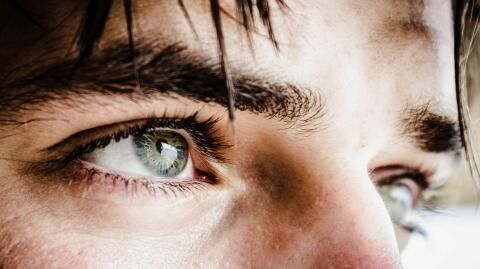An impending stroke can be recognized by various symptoms, from a loss of balance and impaired vision to facial paralysis. However, an eye infarction can also be a sign of a stroke. We list the symptoms of such a stroke.
Discover our latest podcast
Caution with eye infarction
Doctors at the Munich University Hospital warn against 'eye strokes', as they can lead to blindness and also 'greatly' increase the 'risk of stroke and heart attack', according to 24vita. Suchaneye infarction requires rapid action.
Professor Siegfried Priglinger, Director of the Eye Clinic at the LMU Clinic in Munich, explains to the source how important it is to act quickly in this 'dangerous emergency':
In an eye infarction, the central artery that supplies the retina with oxygen becomes blocked.
Risk of blindness if action is not taken quickly
After two to four hours, there is a risk of 'irreversible damage or even blindness', which is why, according to the expert, 'if an eye infarction is suspected, you should call emergency services immediately and have yourself taken to an eye clinic'.
However, there is no pain associated with an eye infarction, which makes it 'treacherous'. In most cases, however, only one eye is affected and sufferers have a kind of veil in front of their eyes and blurred vision.
Veil before the eyes
Patients also notice black spots in their field of vision. It goes on to say: 'Sometimes, from one moment to the next, you can't see anything at all for a few seconds or minutes before the eye appears to recover - but only temporarily'.
This is because tissue dies the moment the oxygen supply to the retina is interrupted, according to Dr. Marc Mackert, Head of the Glaucoma Outpatient Clinic in Munich. This process is similar to an 'ischemic stroke in the brain', which is why eye infarction is also referred to as a 'stroke of the eye'.
Study on the disease
As part of the REVISION study, the doctor investigates the disease and whether the vascular occlusion of the central artery can be dissolved by thrombolysis. To this end, the patient receives 'blood-thinning infusions', provided that they are not already taking blood-thinning medication.
However, as mentioned, quick action is necessary if the disease is suspected, because according to Dr. Mackert, the risk of a heart attack or stroke is '45 times higher in the first week after an eye infarction, and 15 times higher in the first month'.
Cause of infarction recognizable
Fast action is also necessary, as the therapy done by the REVISION study can only be carried out 'up to a maximum of four and a half hours after the stroke'. After that, the chance of saving brain tissue is 'very low' and the risk of bleeding is too high.
According to Dr. Mackert, however, there is currently no 'effective therapy' for the disease, but the cause can be identified and treated, for example 'cardiac arrhythmia or calcium deposits in the vessels' are the cause of the infarction.
Read more:
⋙ If you burp too often, it could mean you suffer from this chronic disease
⋙ Here's what your eye colour reveals about your health, and it may surprise you
⋙ This is what having brain fog says about your health
Source:
24vita: Emergency eye infarction: 'Stroke risk increased up to 45-fold
medlexi: Infarction
REVISION: Early reperfusion therapy with intravenous alteplase to restore visual function (VISION) in acute central retinal artery occlusion (REVISION)'















